Hello,
Welcome to today’s edition of Kitchen Projects. Thank you so much for being here.
Today we’re settling into one of my absolute favourites - the understated tea time cake G.O.A.T: The lemon drizzle. I was a bit intimidated to make this recipe. But I’m thrilled with the discoveries I’ve made along the way.
Over on KP+, the lemon action continues with the level-up version of the drizzle, a curd infused and stuffed loaf cake I’ve called the Lemon Drizzle Supreme. It’s also a deep dive into the world of Citrus curds ft. some 26 tests (I couldn’t help myself). Click here to read it.
What’s KP+? Well, it’s the level-up version of this newsletter. By joining KP+, you will support the writing and research that goes into the newsletter (including the commissioning - and fair payment - of all the writers), join a growing community, access extra content (inc., the entire archive) and more. Subscribing is easy and only costs £5 per month. Why not give it a go? Come and join the gang!
Love,
Nicola
PSST… I’ve written a book!
I can finally say that my debut book SIFT: The Elements of Great Baking out THIS YEAR!!! and it’s available to pre-order now. Across 350 pages, I'll guide you through the fundamentals of baking and pastry through in-depth reference sections and well over 100 tried & tested recipes with stunning photography and incredible design. SIFT is the book I wish I'd had when I first started baking and I can’t wait to show you more.
Drizzle forever
A good few years ago, perhaps even a decade ago, I was gifted a homemade lemon drizzle cake. My dear friend and colleague Louise brought it in, wrapped in foil and presented it to me on the morning of my birthday. I’m not sure what came over me, but I demolished the entire thing, before lunchtime, slice by slice without even realising. That was the moment I knew that I was fully bonded with lemon drizzle cake. Truly, madly, deeply, twin flame level love.
There are thousands of cakes, with all the wonderful variations and peculiarities, but certain bakes are towering giants of the genre. I know it’s different for all of us, but if I had to pick a team to represent the UK in the teatime cake Olympics, lemon drizzle would definitely be one of my star players. It would compete alongside other iconic cakes like carrot, coffee walnut and Victoria Sponge. I’d have a guinness cake and maybe a sticky ginger cake on the bench, and I’d probably bring banana bread along, too. I just feel like banana bread would be good for team spirit, you know?
Despite being over 100 editions in this newsletter, I’ve barely scraped the surface of these classics. There’s something so intimidating about taking a run at these perfect cakes. And, as I’ve often said, there’s nowhere to hide with something so simple. If I share a recipe for a complete classic, it better be a home run (and I have officially run out of sports metaphors, and that will end now). I am very proud of my Victoria Sponge recipe and this chocolate party cake is absolutely killer. And this week, very nervously, I will be presenting what I feel is a pure-to-form lemon drizzle cake.
A Little History of Lemons
So how did lemon cake become a British classic, a regular fixture on the most popular cake lists?
While citrus has been a cooking staple in many traditions for centuries, the UK’s climate does not encourage citrus to thrive. Lemons are probably the most ubiquitous citrus fruit around these days, so it’s hard to believe that they were first born from crossing a citron and a lime and then crossing again with a pomelo somewhere in the Middle East. This fruit was likely introduced and popularised across the Mediterranean by the Arabs in the 7th Century, though some Roman artworks suggest the lemons we know today may have made an entrance earlier than recorded.
Either way, lemons thrived in warm climates and were rare in Northern Europe and, surprisingly, non-existent in North and South America, where there are no native citrus species. It wasn’t until Christopher Columbus established a settlement in the 15th Century that citrus became abundant, finally making its way to Mexico and California, the former now being the second-largest producer of lemons in the world. Despite producing some 3 million tonnes of lemons per year, I'm intrigued that Mexican cuisine seems not to use lemons at all in their cooking, favouring their most abundant crop, limes. (Can anyone shed light on this for me? How fascinating!)
In the UK, luxurious and expansive orangeries became popular in the 17th Century, allowing wealthy families to grow their own citrus, with tall south-facing glass buildings that would afford protection to the exotic species within. Though it was a luxury, hard to procure ingredient, lemon begins to appears in 18th century texts in posset-like custard recipes. But the exact origins of lemon cake is unknown, recipes that include zest and juice in cake batters begin to appear in the 19th Century, though I imagine it has a much longer, richer history than recorded.
SO what of the drizzle? We have a modern hero to thank for that. The late Evelyn Rose’s recipe for ‘luscious lemon cake’ was published in The Jewish Chronicle in 1967 and seems to be the first to combine a lemon sponge with a syrup. Here’s the original:
Building cake batters
Harold McGee describes cake as “a web of flour, eggs, sugar and butter that readily disintegrates in the mouth and fills it with easeful flavour” - cake is such a wonderful representation of four pillars of baking intertwining perfectly.
Whenever I go to make a cake recipe, I begin with the foundation of a pound cake - we know that equal parts sugar, butter, flour and eggs make a great cake, a perfect balance of ‘tougheners’ aka things that get firm when heated (flour, eggs) and ‘tenderisiers’ aka things that stay soft (fat, sugar). This push-pull within the cake is what forms the structure. As we observed in the ‘all about cake’ edition, veering too far from these ratios can result in disaster, with collapsed centres or shockingly dry crumbs.
For my perfect lemon drizzle, I didn’t want to veer too far from the established 1:1:1:1 ratio - you see, lemon drizzle needs to be robust enough to stand up against a generous showering of syrup. It needs to be absorbent without becoming claggy. If you start to add additional liquid, like sour cream, milk, or yoghurt, as lightened moist cake crumbs often do, I was wary that the cake would collapse under the strain of the essential syrup. Lemon drizzle should not be light as air - it should be robust and juicy. Though butter is a happy match for lemons, the creamy sweetness tingling with help of an acid, this cake benefits (as all do, really) from the addition of oil.
Though olive oil would be great here, a simple neutral vegetable oil significantly improves the texture and shelf life, keeping an already soft cake even softer for ultimate tea-time lasting power.
The lemon flavour
One huge benefit we get when making lemon cake is the inherent tenderising effect of acid - acid breaks down starch, leading to a finer, more tender, velvety crumb. It also supercharges our raising agents. A word of warning though: Some lemon cake recipes suggest using just baking soda to leaven the cake. But if it's lemon flavour you’re after, I’ve got no idea why you’d want to do that - yes, lemon juice is effective at activating baking soda, but, as a result, the juice and flavour are somewhat neutralised. Boo. I tested this out by taking the pH of lemon juice before and after adding bicarb to it - formerly acidic and tangy lemon juice (red) is now neutral.
Though the syrup carries much of the flavour, there’s no reason to shortchange the crumb. Never, ever shortchange your recipes with zest if you’re serious about lemon flavour - it crucially carries aromatic oils that can lift bakes and add important fragrance [insert joke here about these oils ‘essential’] to your bakes, flavours which, essentially, won’t be dimmed by accident via any neutralising effects of raising agents. It’s a good idea to pair it with fat to get the best out of zest. The very clever Holly Cochrane bathes her zest in sour cream in her lemon pound cake recipe which is a great shout. In the recipe below, I choose to beat the zest with the butter, pounding the zest into the fat to release and capture the oils.
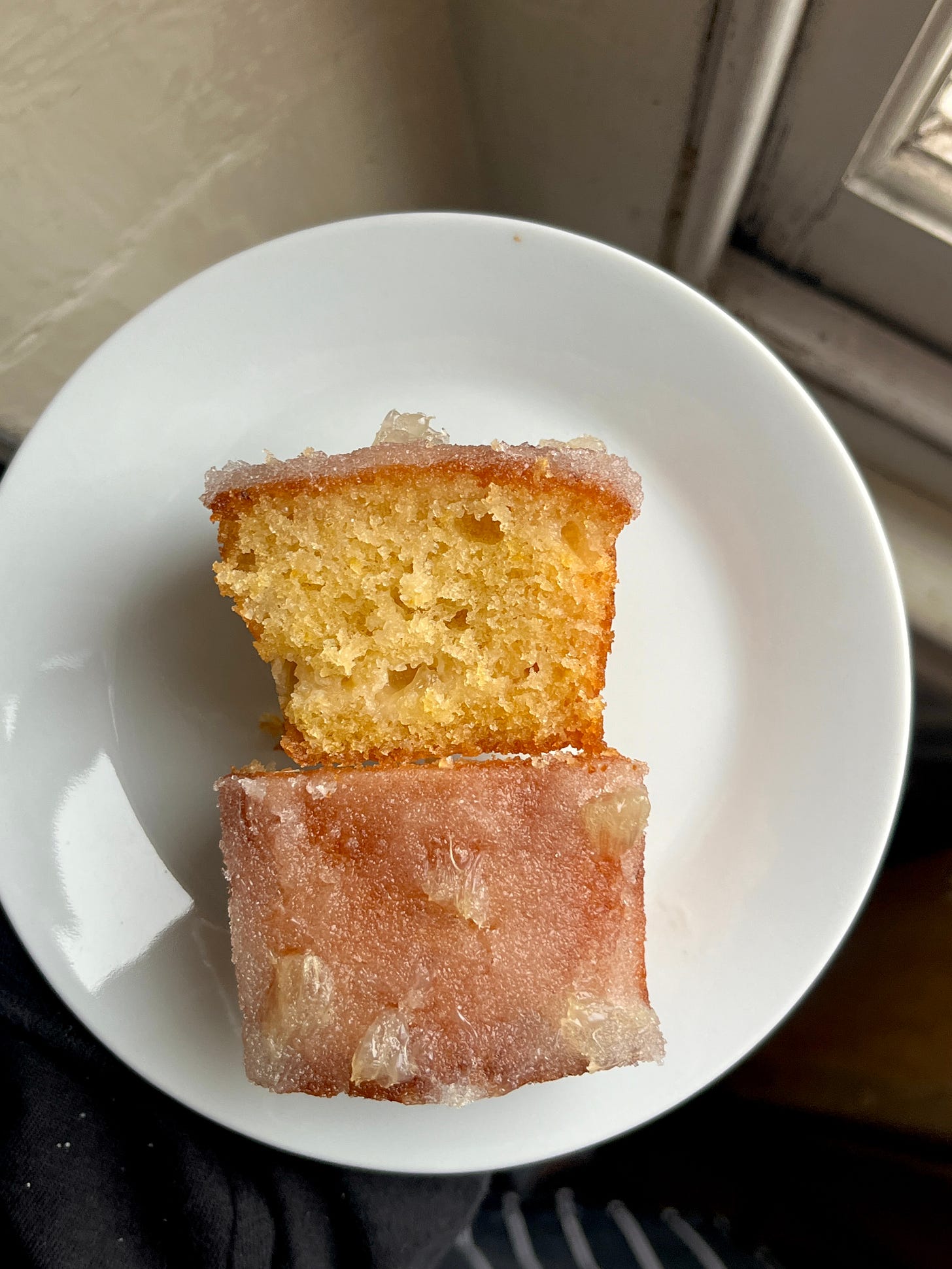
Though pure juice is gorgeous and bright, this week I loved the version of the cake I made that utilised mini, fleshy segments - a lot of the juice, the little bursts of lemon flavour, resulting in a much more vibrant crumb and eating experience. It also keeps the flavourful lemon juice contained, away from the raising agents which threaten to dim the flavour.
The crust: An essential ground rule
I am particular about lemon loaf cakes. We have to establish that a lemon drizzle cake is a type of lemon loaf cake and the most important qualifier is that, first and foremost, any lemon loaf cake that omits the crunchy sugar top is immediately disqualified from being considered a drizzle cake. Every time I see a lemon loaf with a white, icing sugar glaze, I feel genuinely crushed. Why would you reject joy like that? The crusty, crunchy lemony glaze is a perfect, understatedly chic accompaniment to a soft, soft sponge. The way the lemon juice soaks into the sponge and leaves a cloak of citrussy, crunchy sugar is masterful.
When I sat down to write this newsletter, I realised how rare it is to see a lemon drizzle out in the wild compared to its white-icinged counterparts and this is why I think it’s so special - almost every great lemon drizzle I’ve encountered has been at home, or at the home of a friend or loved one. It’s a simple cake baked with a wholesome purpose.
I’m not sure who sent out the memo that white icing was preferable to a glistening, crunchy sugar top, but they were unequivocally wrong, and lemon loaf cakes have been diminishing in quality ever since. I’m usually very open with people’s baking preferences, but the sugar coating on a lemon drizzle cake is one area I will not budge on. If you find yourself baking a lemon cake and reaching for icing sugar, take a moment to adjust your priorities.
One challenging thing about most lemon drizzle recipes is how the glaze ingredients call for ‘the juice of one lemon’ + a weighted amount of sugar. In my experience, this is too unspecific for how variable lemons can be. To figure out the perfect lemon juice to sugar ratio for the optimal crust, made several syrups and poured over my mini cakes, 1:1, 1:2, 1:3 lemon juice to sugar:
The 1:3 ratio was a bit over the top, but the 1:2 was lacking. Fortunately, we’ve always got the option to go somewhere in the middle. The final ratio I’ve gone for is 1:2.5. Slightly awkward maths, but very perfect crust.
A segue into Lemon Curd
I’ve been tiptoeing around the subject of curd for years now. And while I had no intention of stumbling down the curd path this week and meant to fully focus on a simple cake, before I knew it, I was 10 batches of lemon curd in. The gateway to this curd hyperfixation? The reason for this diversion from my mission? Mayonnaise.
Let me explain why: I’ve known for a while about a genre of cakes that utilise mayonnaise in the batter. It’s a smart, leftover technique from the rationing days of WW2 in the US when eggs and dairy were scarce. Why seek out eggs and dairy when there’s an ingredient in your store cupboard that is already a perfectly emulsified combination of eggs and fat? Using mayo in cakes, in particular chocolate ones, soared in popularity, furthered by Hellmans as a way of selling more mayo, with a recipe for cake even appearing on the back label. And it wasn’t just for novelty - cakes with mayonnaise are loved for having exceptional moisture thanks to the oil and additional fat from the egg yolks. Plus, the already strong emulsion blends happily into the cake creating a gorgeous cake batter.
So what if the same theory could be applied to lemon curd? After all, lemon curd is a harmonious blend of lemon juice, eggs, butter and sugar, all ingredients that you put into a lemon cake anyway. I worked out the numbers and figured out a recipe that used lemon curd in place of some of the eggs, flour and sugar (in a ratio that was comparable to a pound cake) and put it to the test:
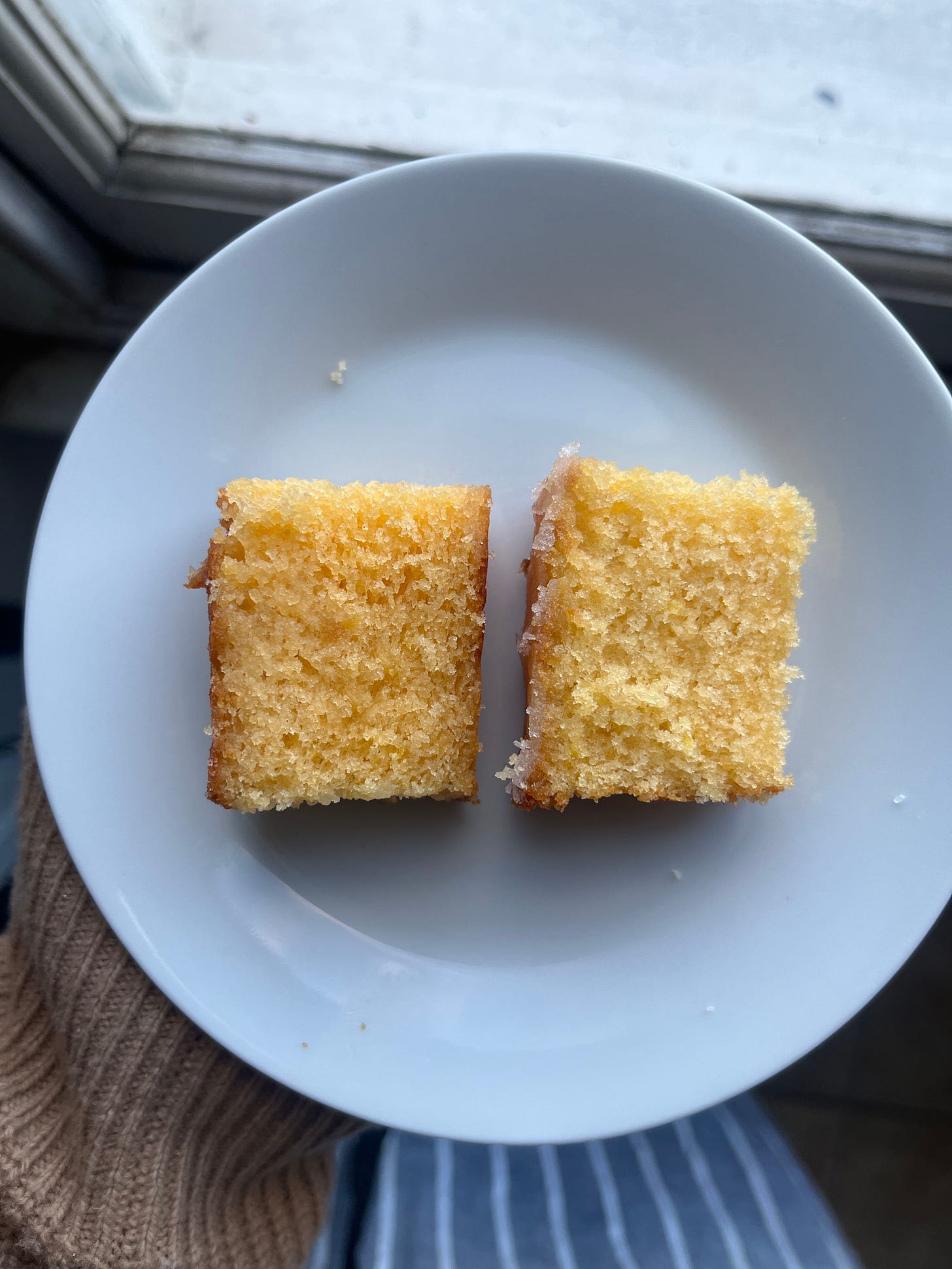
The cake using the curd had a much finer, more velvety crumb with a deeper lemon flavour. The crumb was a bit tighter and softer, in a good way, and lacked the rubbliness of the sponge that used the equivalent component parts. It’s certainly a worthwhile adventure, though the simple sponge is still gorgeous and more than holds its own in comparison. In the same way you can make a great chocolate cake without mayo, a lemon sponge doesn’t *need* curd to excel, but it’s a great technique to influence the brightness of your crumb.
And btw, I did try spooning curd into the batter before baking and, though you can probably guess, it was a flop. The curd fell to the bottom of the cake and burnt, leaving a weirdly curdled eggy mess on the base:
Not cute. But you know what works REALLY well? Piping lemon curd into a WARM cake immediately after baking.
Enter: the next-level lemon cake aka lemon drizzle supreme!
Since lemon curd is such a rich, pure expression of lemon flavour, I wanted to use it to bring the lemon drizzle to the next level. Piped into the cake while still warm, pre-syrup, it resulted in a perfect, moist centre that partially dissipated into the crumb, bringing an unbelievably vibrant, gooey surprise into the cake. Using curd inside the sponge, and then additionally piped into the crumb, plus the syrup, creates a lemon drizzle loaf to rule them all: I call it my lemon drizzle supreme.
Over on KP+, along with the recipe for lemon drizzle supreme, I’ve ventured further down the curd rabbit hole and explored the various ratios and variations affecting curds. From sugar to acidity, whole vs yolks, to the role of fat. Click here to read it!
The recipe: Classic Lemon Drizzle
Makes 1 x drizzle cake, serves 8 (or one, if you’re me), or about 8-9 mini loaves.
Equipment: Loaf Tin, 21.5 x 11.5 x 7 cm (8.5" x 4.5" x 3"). This is the one I have
Lemon Cake batter
175g Butter, soft
30g Vegetable oil
185g Caster sugar
200g Whole eggs
200g Plain flour
12g Baking Powder (about 3 tsp)
50g Milk
½ tsp Flaky salt
2 Lemons (about 150g per lemon to give you about 50g-60g segments)
Crusty lemon topping
45g lemon juice (approx one)
115g caster sugar
Pinch of fine salt
Optional: pinch of citric acid
Method
Line the loaf pan with baking paper and set aside. Preheat oven to 160 c fan
Zest the lemon and set zest to one side. Cut the top and bottom of your lemon so you have a flat base to work from. Carefully slice the pith/skin away, following the curve of the fruit as best you can. You can go back over it to remove any stragglers later.
Once all the skin is removed, cut segments from between the membranes of the orange, using your knife at an angle to get really clean cuts. Use the white lines of the membranes to guide you and try to cut as close to these are possible. Set seeds aside.
Cut the perfect segments into 4-5 smaller chunks and put these, juice and all, into a small bowl and set aside. Squeeze the leftover flappy lemon membranes into the bowl so no lemony goodness is missed. You should have about 50g-60g segments per lemon.
Cream together the butter, zest, oil and sugar on a medium speed until lightened and the sugar is dissolved, about 2-3 minutes. Scrape down the sides of the bowl and slowly add the eggs, one by one. It may curdle a touch, but persevere and continue adding. As it's winter, the batter is much more prone to curdling - the butter splits apart as you add colder eggs. If you want to put in some extra effort, you could gently heat the bowl whilst adding the eggs, but to be honest, this cake will be okay if you don’t bother.
Sift together the flour and baking powder together then add in three additions. I choose to fold this in by hand. Try not to deflate your aerated batter and once you see no more streaks of flour, stop mixing. Finally, add the milk and salt, folding briefly until a very lush, smooth batter forms, finishing with the lemon segments and juice. Stir through briefly.
Pour into the tin and smooth the top. Bake for 50-60 minutes or until a skewer comes out clean. It may crack a touch, but that’s okay - lemon drizzle should be gloriously rustic.
When the cake comes out of the oven, mix together the glaze for the crust. If desired, you can add a few lemon segments to the mixture for decoration. Pour all over the top of the loaf (no need to stab cake for absorption - it will permeate happily without). Sometimes I gently lift the edge of the cake to let a bit of the syrup go down the edges. Leave to cool in the tin.
Serve in thick slices and enjoy with tea. Cake will last at room temp for 4-5 days - wrap it well for best results.
Notes
If you are making mini drizzles, use about 85g batter per mini loaf tin (I have these ones) and bake for 18-22 mins
Want to level this cake up to make a curd stuffed Lemon Drizzle Supreme? Check out KP+ now.







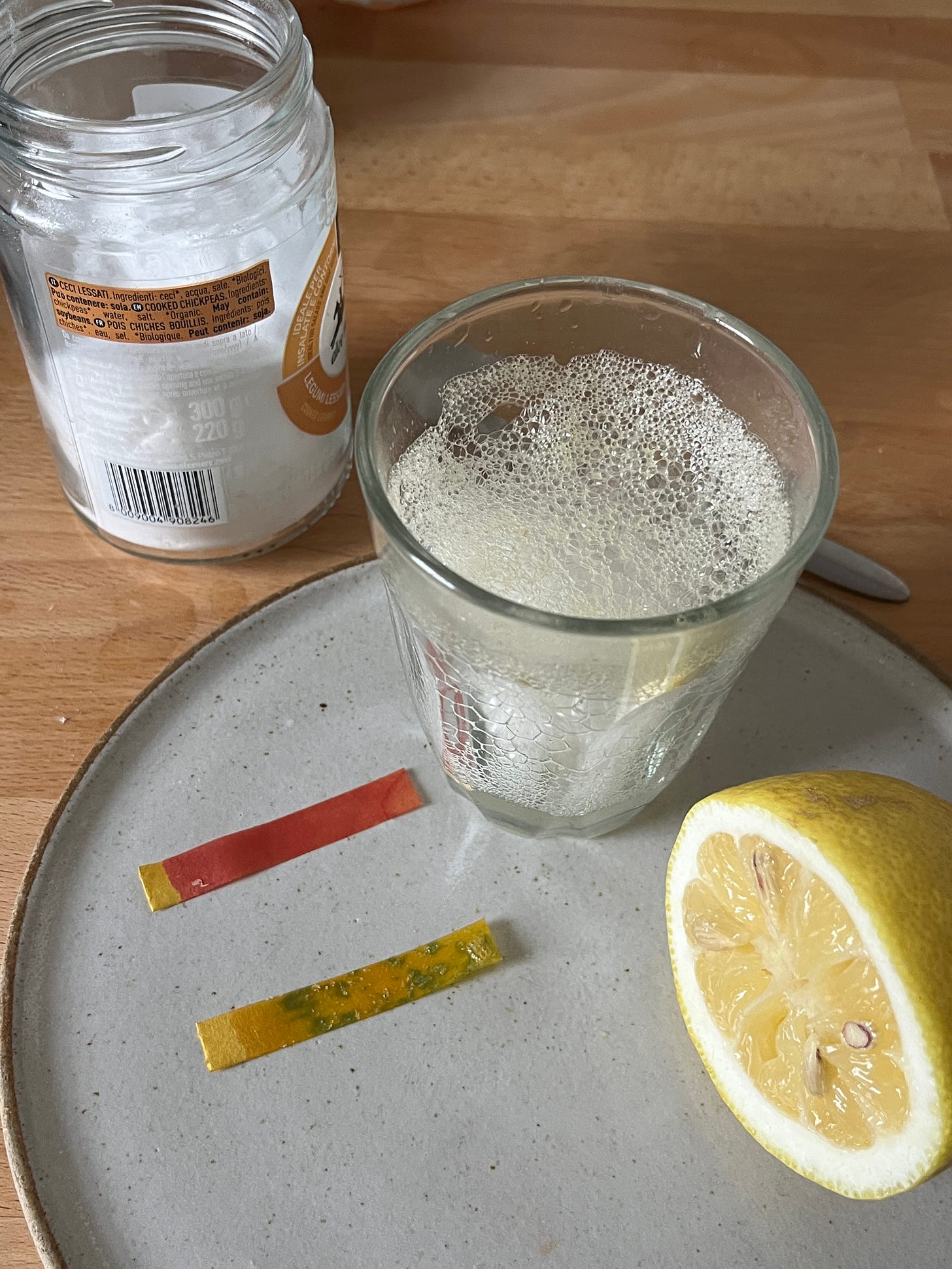
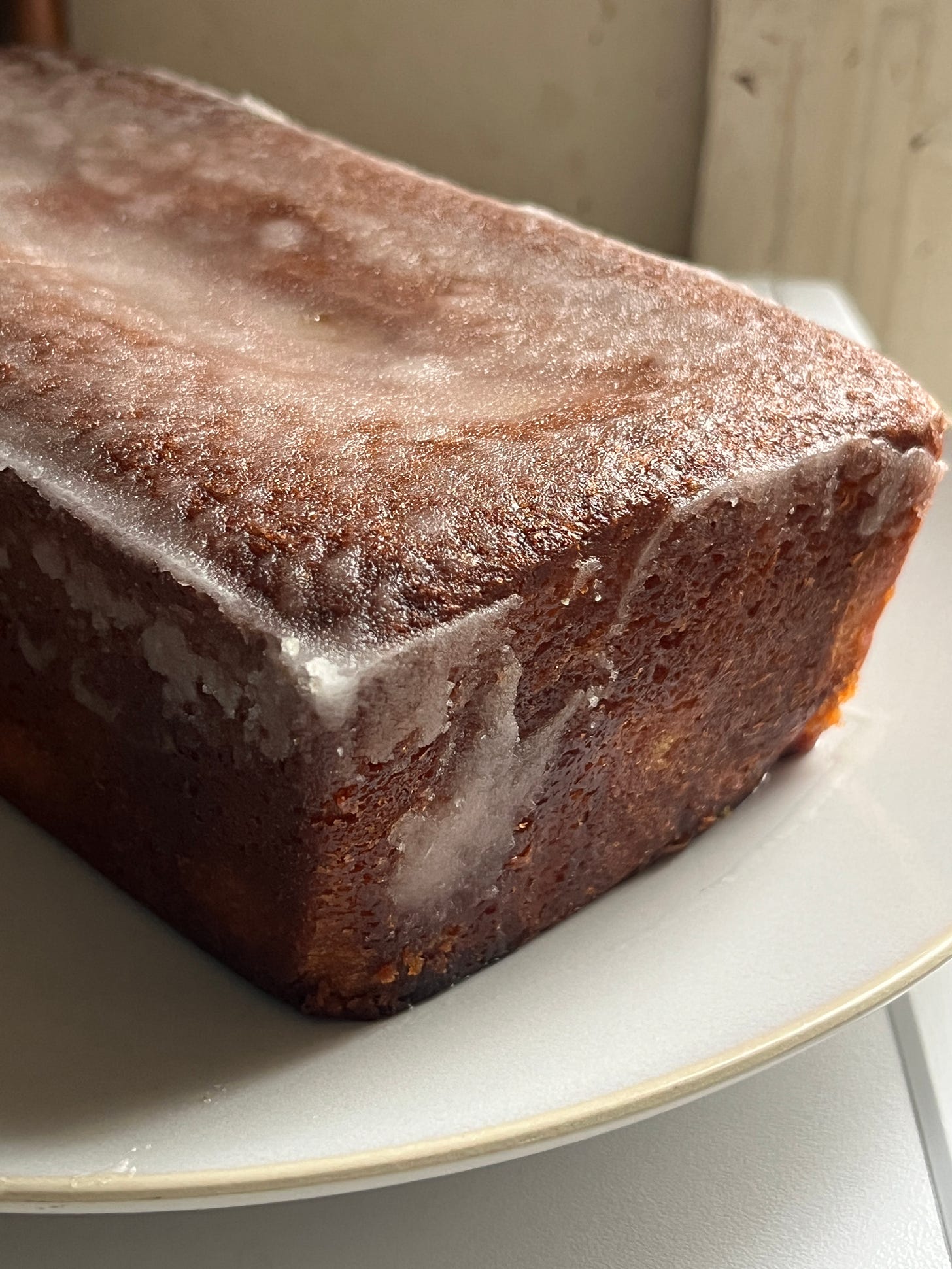
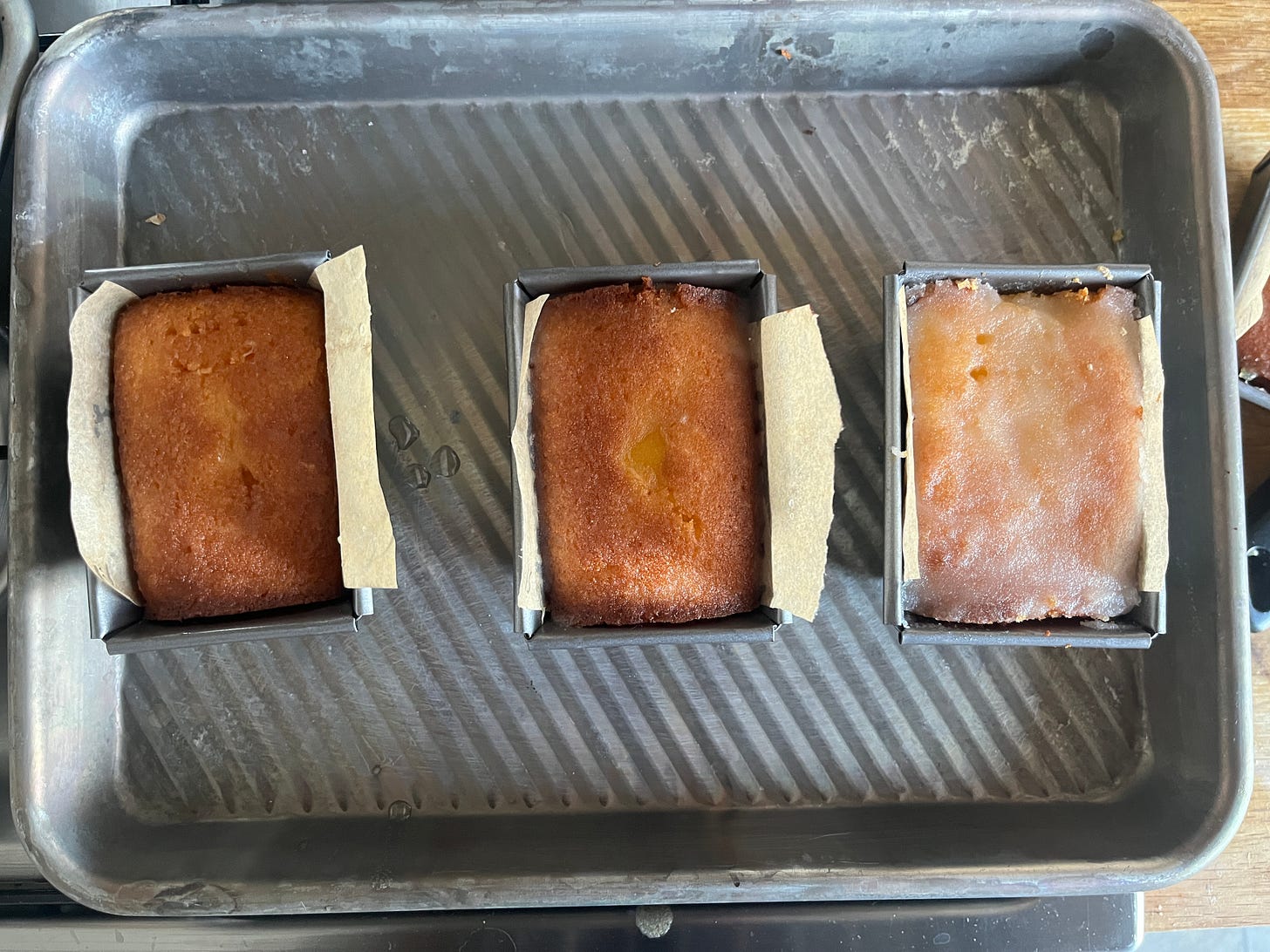
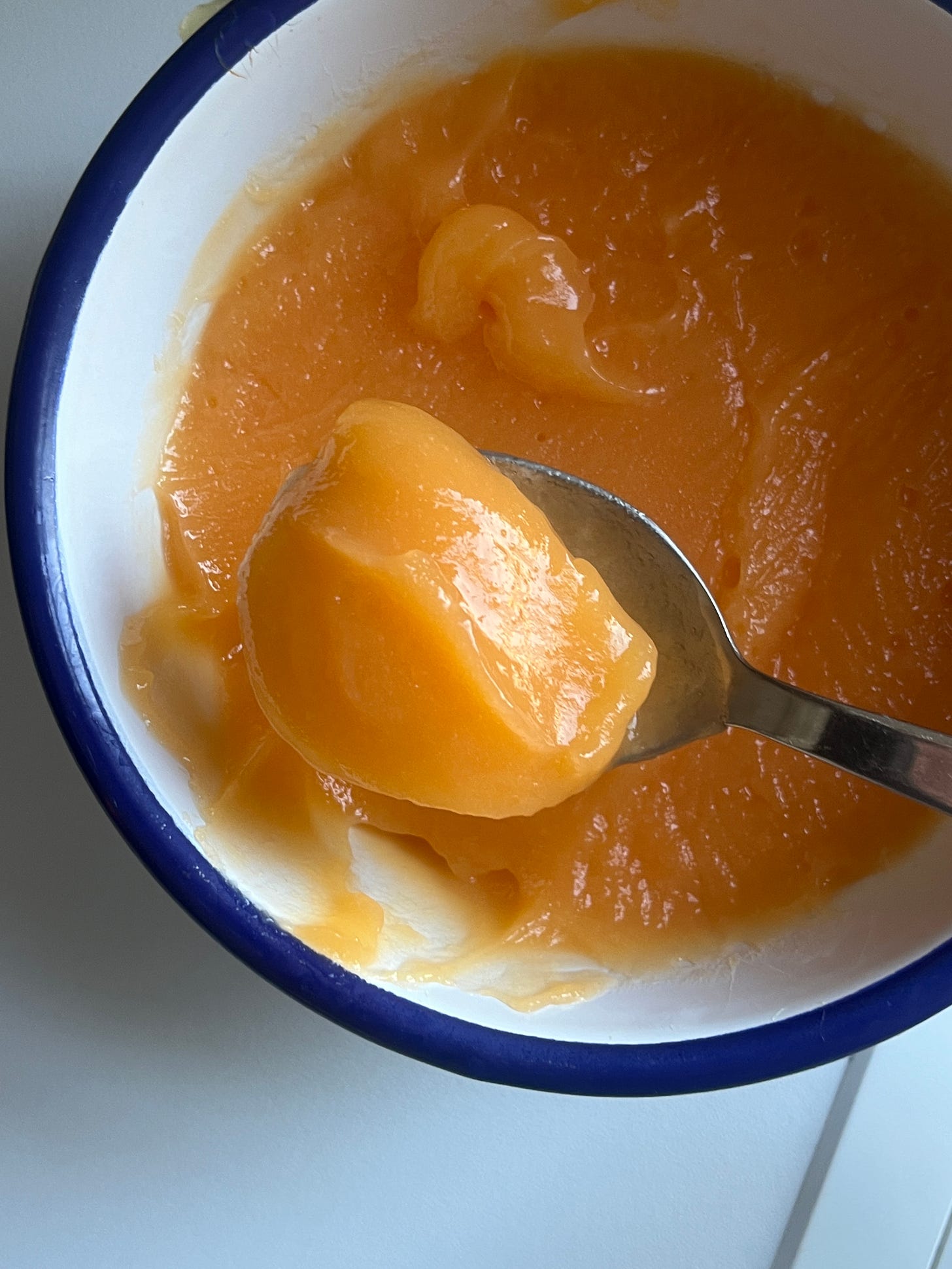

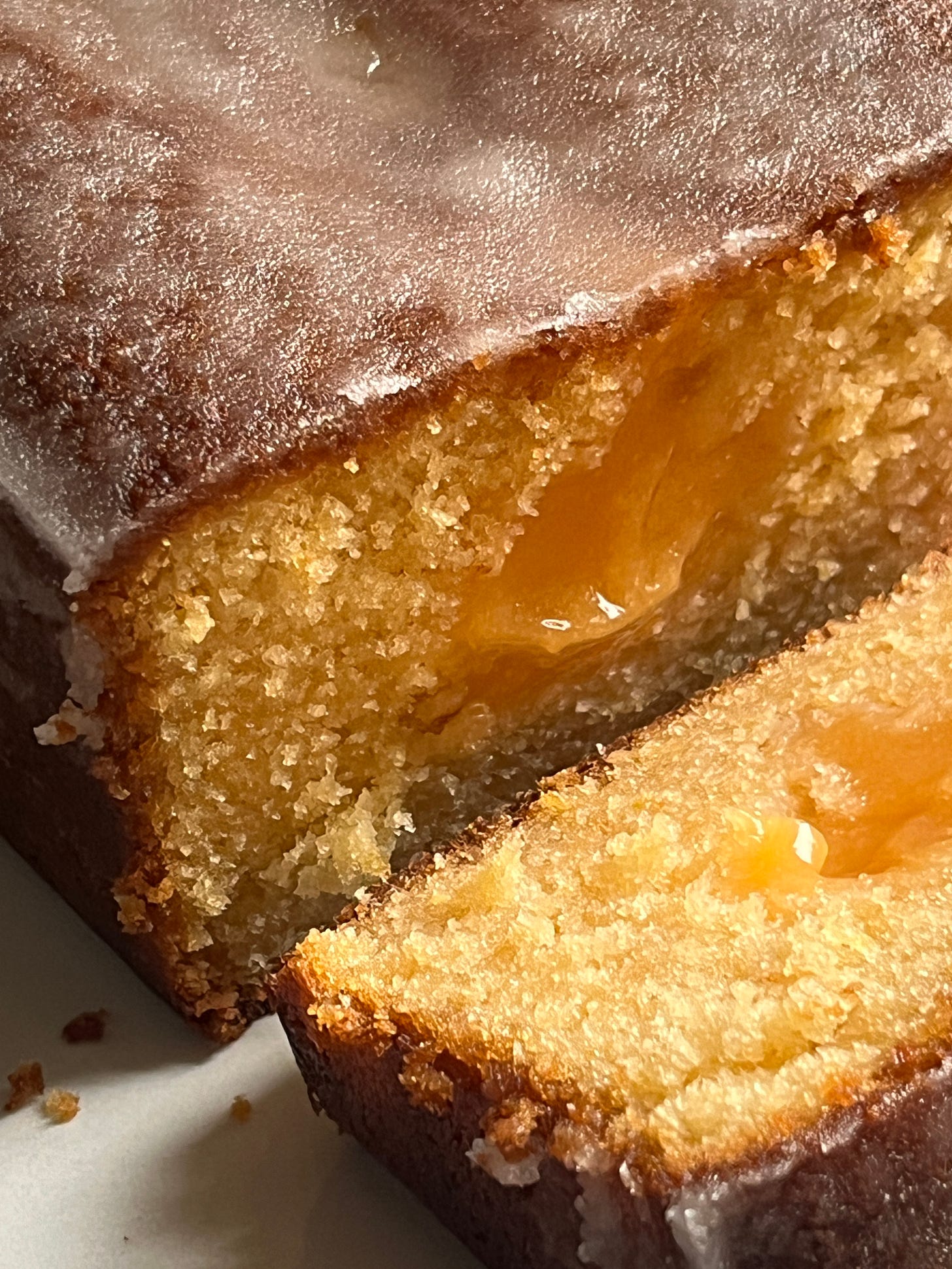
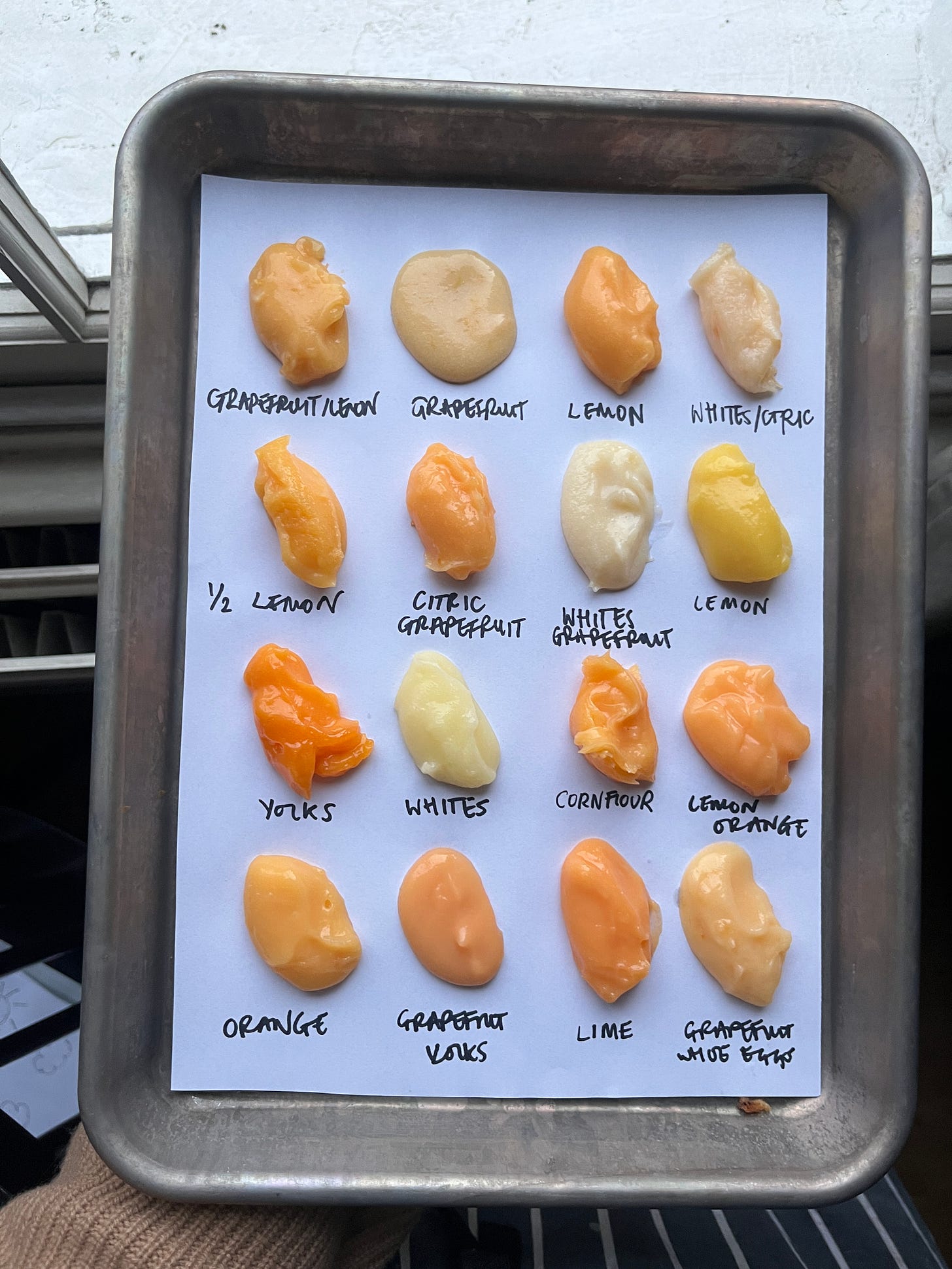
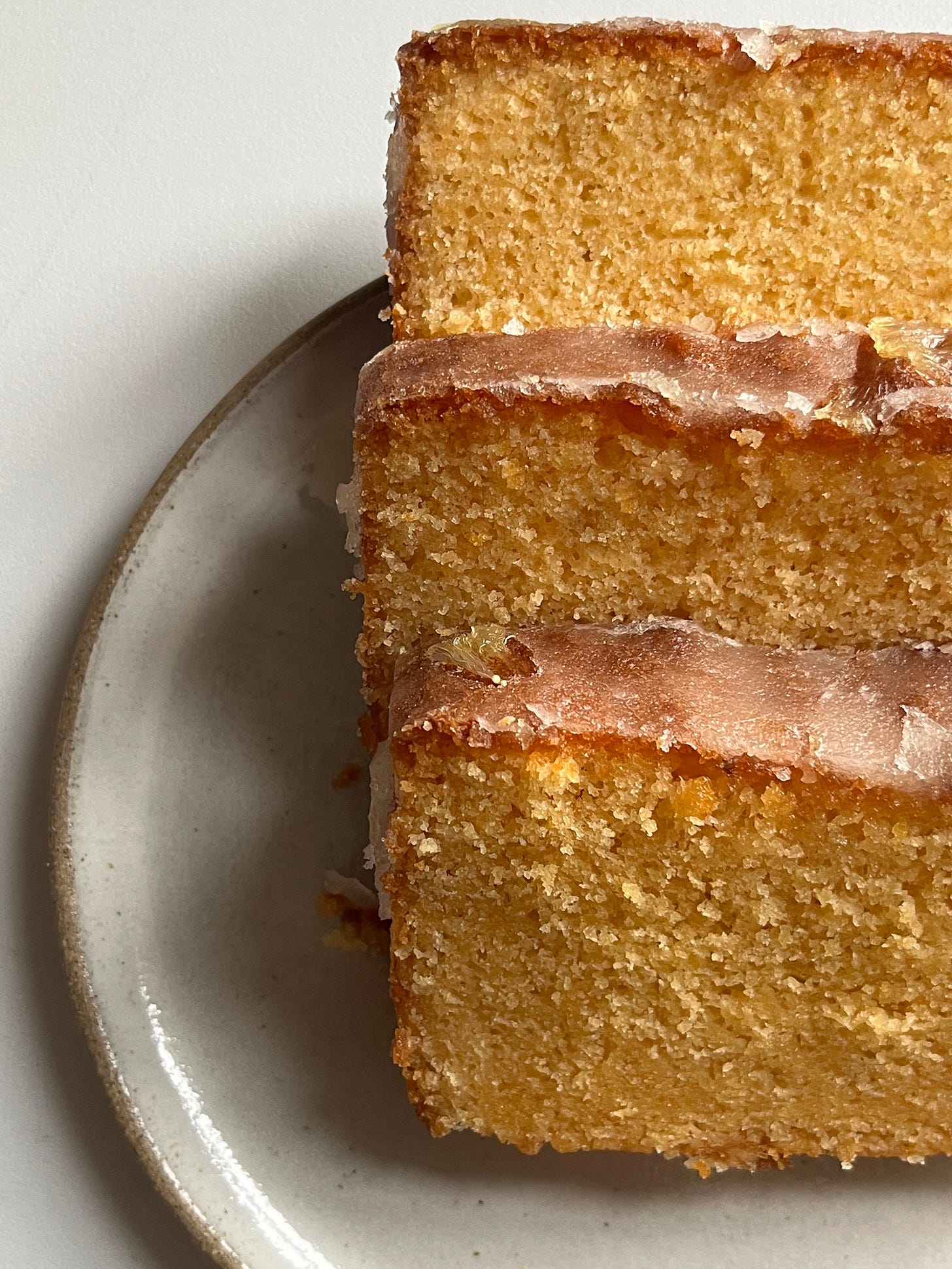
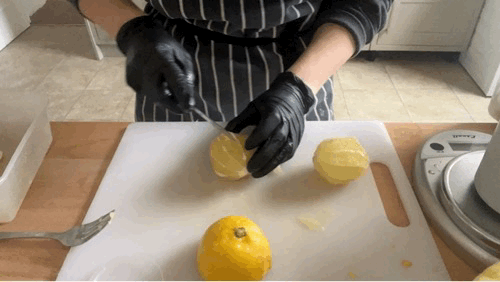
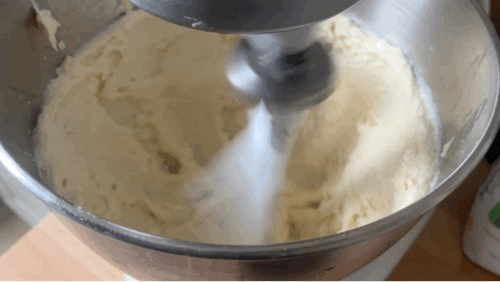
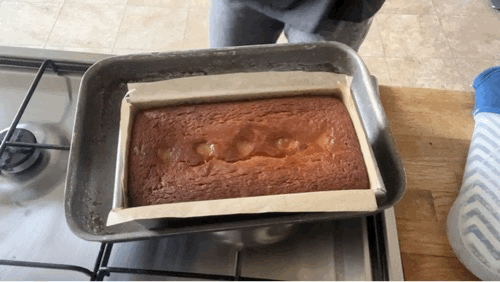
Hi Nicola, when do you add in the mini segments and the juice? Do they get folded into the batter at the end?
It’s loaf cake season!! I’ve just made a London Fog loaf cake (earl grey tea and orange zest) that I’m excited to try in a bit. It used butter and cream cheese as the fats which will be interesting